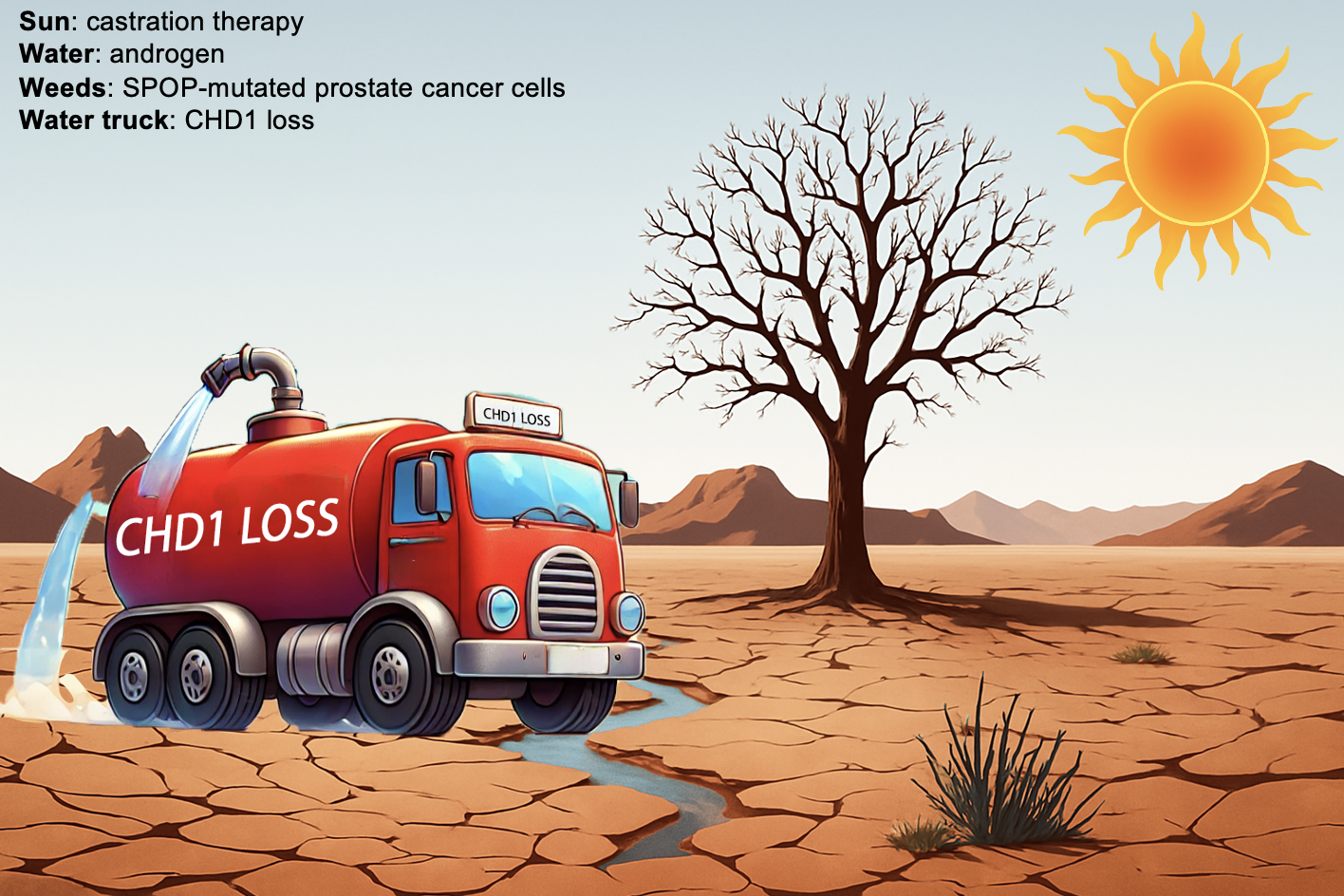When Cancer Cells Find Water in a Desert: Cracking the Code of Castration Resistance in Prostate Cancer
Published in Cancer, Genetics & Genomics, and Biomedical Research

Imagine a few weeds stranded in a dry land, struggling to survive without water under the scorching sun. This is what happens to prostate cancer cells during androgen deprivation therapy (ADT), also known as castration therapy, a mainstay treatment for men with prostate cancer. ADT cuts off the supply of androgens, hormones like testosterone that fuel cancer growth. Without these hormones, the “water” that keeps them alive, most prostate cancer cells wither and die, just like weeds in a desert.
This is especially true for a subset of prostate cancers with mutations in the gene SPOP, which are found in up to 15% of patients. These SPOP-mutant tumors are particularly sensitive to castration therapy. In our desert analogy, they are the weakest weeds—gasping for water, unable to endure the harsh, sun-beaten environment created by therapy. As a result, patients with SPOP-mutant tumors often show a better initial response to androgen deprivation.

But as with many cancer stories, this one has a twist.
Half of SPOP-mutant tumors have CHD1 loss, another genetic alteration that dramatically alters the behavior of these cells. In our metaphor, CHD1 loss acts like a magic water truck in the middle of the desert, helping the weeds survive against all odds. But how is that possible when the main water supply, the androgens, has been cut off?
Our research uncovered the answer: CHD1 loss rewires the cancer cell’s metabolism, significantly boosting cholesterol biosynthesis. Why does that matter? Because cholesterol is a critical building block for making new androgens inside the tumor. This means that even when systemic androgens are shut down by therapy, the cancer finds a workaround—producing its own androgens from scratch, like discovering an underground spring in the desert. This self-made “water supply” confers resistance, allowing prostate tumors to grow despite castration.
Understanding this resistance mechanism opens a new horizon for prostate cancer treatment. If CHD1 loss enables tumors to make their own androgens, then perhaps shutting down this alternative source could restore the effectiveness of castration therapy.
That’s exactly what we tested. In prostate cancer models with both SPOP mutations and CHD1 loss, we combined standard anti-androgen therapy with cholesterol-lowering drugs. The results were striking: the combination effectively blocked intratumoral androgen production and caused strong, sustained tumor suppression. By targeting the magic water supply of cancer, we could halt its progression.
In short, our study uncovers a hidden metabolic vulnerability in a challenging subset of prostate cancer with co-deficiencies of CHD1 and SPOP. It also highlights a new, biomarker-driven treatment strategy that could benefit patients who currently have limited options. For those battling advanced prostate cancer, understanding and interrupting these survival pathways could make all the difference. Learn more in Nature Cancer.
Follow the Topic
-
Nature Cancer

This journal aims to provide a unique forum through which the cancer community will learn about the latest, most significant cancer-related advances across the life, physical, applied and social sciences.



Please sign in or register for FREE
If you are a registered user on Research Communities by Springer Nature, please sign in